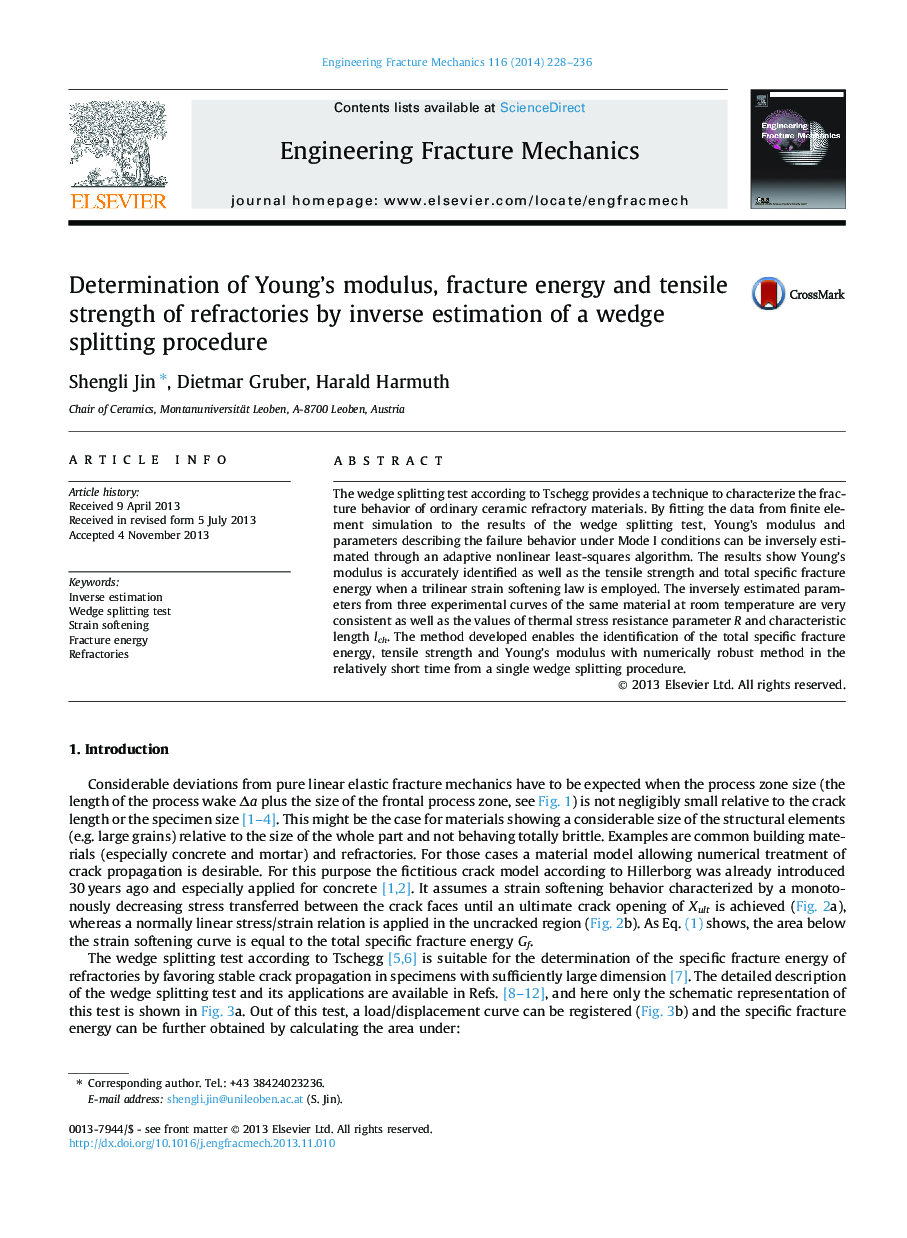| Article ID | Journal | Published Year | Pages | File Type |
|---|---|---|---|---|
| 774808 | Engineering Fracture Mechanics | 2014 | 9 Pages |
•A more general approach for inverse identification of wedge splitting test results is developed.•This approach avoids the pre-analysis of Young’s modulus from the experimental curve.•The tensile strength and the total specific fracture energy of refractories can be inversely estimated.•This approach is easily handled and implemented into other research fields where the inverse estimation is needed.
The wedge splitting test according to Tschegg provides a technique to characterize the fracture behavior of ordinary ceramic refractory materials. By fitting the data from finite element simulation to the results of the wedge splitting test, Young’s modulus and parameters describing the failure behavior under Mode I conditions can be inversely estimated through an adaptive nonlinear least-squares algorithm. The results show Young’s modulus is accurately identified as well as the tensile strength and total specific fracture energy when a trilinear strain softening law is employed. The inversely estimated parameters from three experimental curves of the same material at room temperature are very consistent as well as the values of thermal stress resistance parameter R and characteristic length lch. The method developed enables the identification of the total specific fracture energy, tensile strength and Young’s modulus with numerically robust method in the relatively short time from a single wedge splitting procedure.
